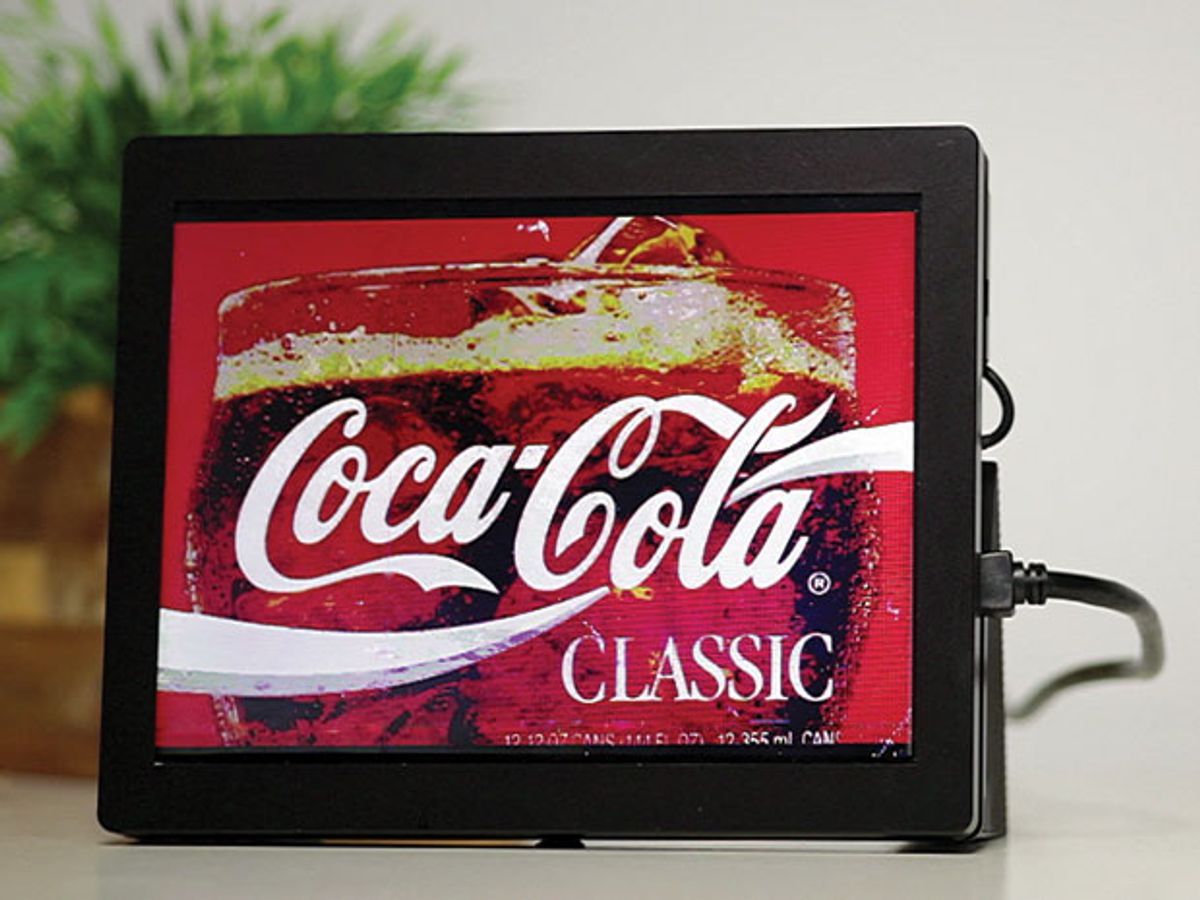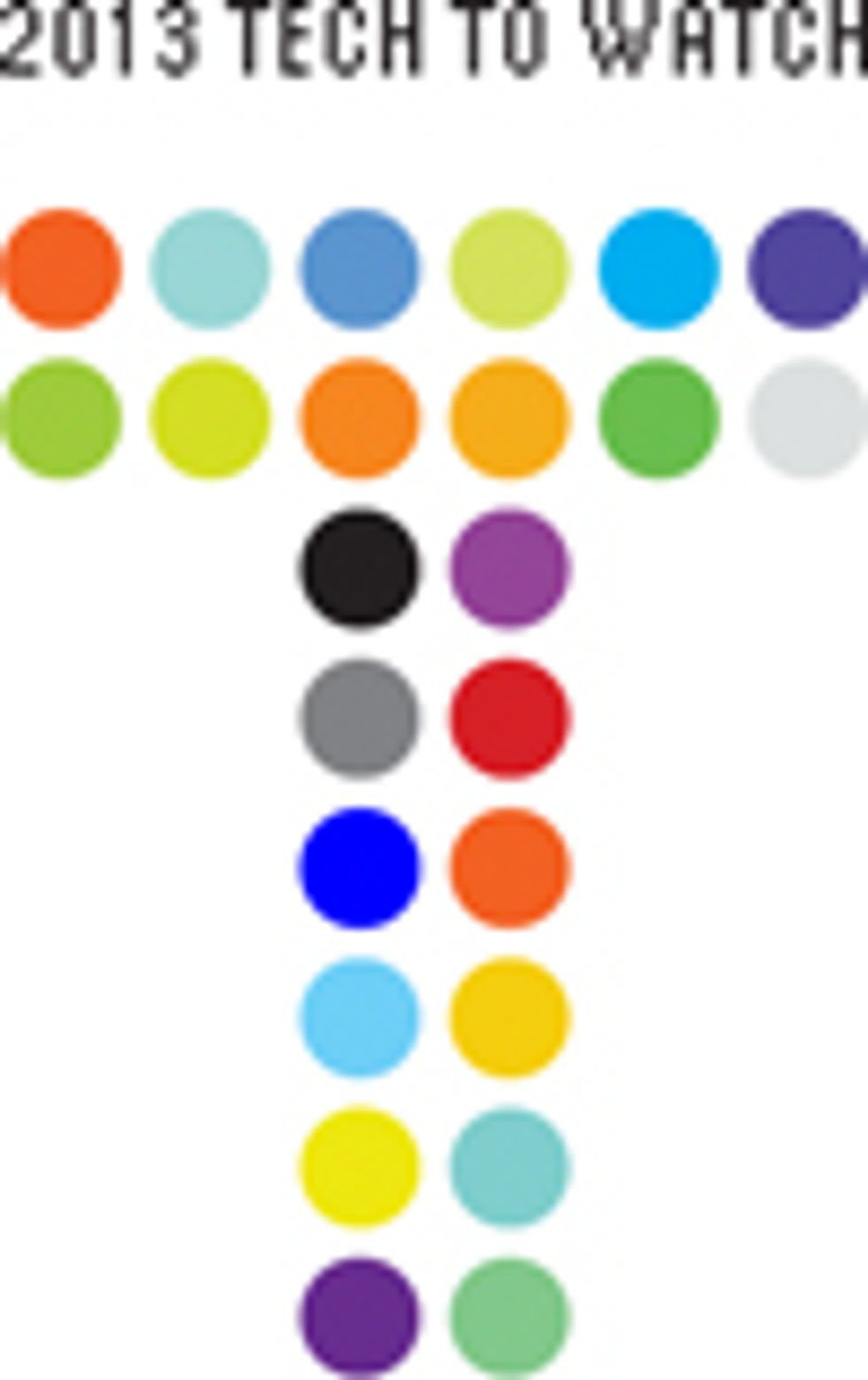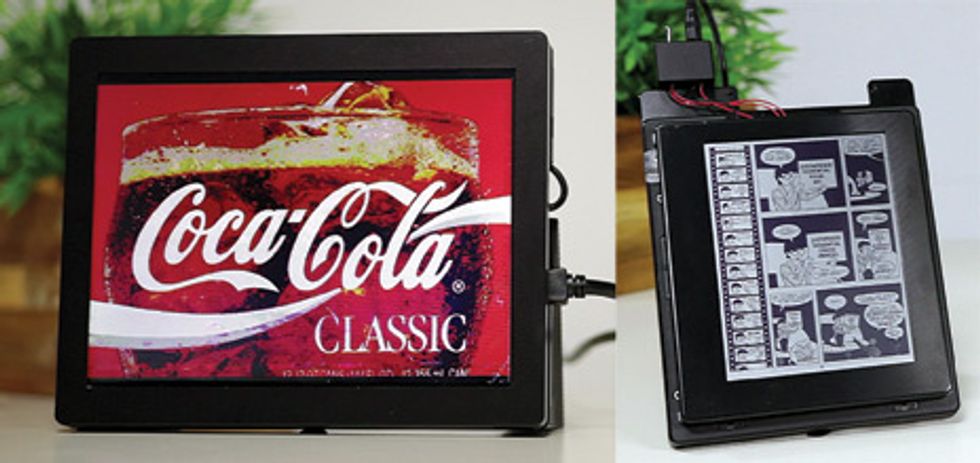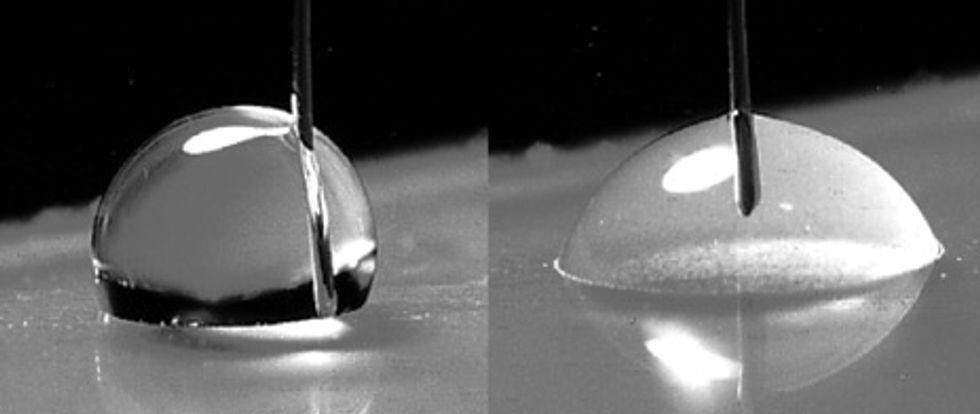Lighter, Brighter Displays
Electrowetting combines the best of LCD and E Ink

Chances are you spend far more time looking at electronic displays than at anything else, including your spouse’s face. Yet though they dominate our lives and bring their manufacturers billions of dollars in revenue, displays are still pretty lousy, especially in mobile applications.
Liquid-crystal displays (LCDs) are heavy power hogs and practically useless in daylight. E-paper displays, which dominate e‑readers, are light, readable even in direct sunlight, and parsimonious with power, but they can’t display colors or change fast enough to handle video.
A display that combines the best features of LCDs and e-ink has long been a major goal [see “Lite, Brite Displays,” IEEE Spectrum, March 2010]. This year, one of the best and brightest of the dozen or so contenders should finally make its commercial debut.
It’s based on electrowetting [PDF], a trick that uses an applied voltage to alter the “wetness” of a surface, making a film of oil either spread out or bead up. If the oil is opaque, it’ll act as a shutter to turn a pixel on or off in a tiny fraction of a second.
The Korean technology colossus Samsung will be the first to market a display based on electrowetting, having acquired the technology when it bought Liquavista, a Philips spin‑off, in 2010. A similar approach is also being pursued by Gamma Dynamics, a start-up in Cincinnati that’s commercializing technology developed at the University of Cincinnati.
It is in demanding mobile applications that the display’s diverse strengths will be most apparent. With electrowetting, the same display could go from beach to bedroom, and it could handle books, magazines, videos, and Web-surfing in vivid color—all while economizing greatly on battery power. Further in the future, electrowetting might even deliver the long-sought “roll-up” display, a bauble in recent sci-fi films, which could roll or fold an iPad-size display into an iPhone-size housing.
Johan Feenstra flips a switch on a big light box and a half dozen experimental electrowetting displays come to brilliant, riotously colorful life. For Feenstra, who cofounded Liquavista and is now the CEO of Samsung’s R&D Centre in Eindhoven, Netherlands, these are heady times. He’s on the verge of learning whether the technology he has nurtured for the past 13 years can carve out a hunk of the vast market for efficient, full-color displays.
In the light box, the physical evidence seems compelling enough. There are seven panels, ranging from a diagonal of 7 inches to the iPad’s 9.7 inches. On several of them, still pictures flash by while the others run videos. The colors are strong and clear, and the motion is smooth and free of lagging or blurring. The demonstration is all the more impressive because none of these panels is backlit. They all reflect light from the light box’s fluorescent tubes, and therefore run at perhaps one-tenth of the power that backlit LCDs would need.
The LCD—that is, the thin-film-transistor liquid-crystal display—is one of the great inventions of the 20th century [See “How RCA Lost the LCD,” Spectrum, November 2012]. But it has its weaknesses. A typical LCD [PDF] screen consists of many optical and electronic layers, at the bottom of which is the backlight. Above it are two filtering layers that polarize its light—the first at one angle, the second at an orthogonal angle. That one‑two polarizer punch effectively blocks any light from getting through.
However, in between the polarizers lies a layer of liquid crystals. In this layer, when a voltage is applied to a tiny area, called a subpixel, the liquid crystals rotate the polarization of the light from the first filter, so that it is no longer at a 90-degree angle with respect to the second polarizer. This allows at least some light to get through. If the display is a full-color one, this subpixel also has a red, a green, or a blue filter, which means that this colored subpixel can be turned on or off by simply applying a voltage to it. This is how the display’s thousands or millions of subpixels create full-color images.
The problem is that the polarization limits both the viewing angle and the light coming from the backlight. Together, those optical layers [PDF]—the polarizers, the color filters, and so on—waste more than 90 percent of the backlight’s output.
Electrowetting limits this loss by dispensing with the polarizers. In one version [PDF], the light coming through a subpixel is controlled by an opaque black oil. Think of this subpixel as a square, shallow cup. It is filled with water, and there’s a film of black oil spread over the cup’s bottom, which is a transparent insulator. Underneath the insulator, sandwiched against it, is a transparent electrode. When a voltage is applied to that electrode and across the insulator, electrostatic forces cause the black oil to form a tight ball in a corner of the “cup.” Now light can stream through the subpixel, except for the tiny bit blocked by the ball.
Though they use different “shutters” to control light, electrowetting displays and LCDs share many components, including the backplane containing the thin-film transistors that turn the voltage on and off at each subpixel. This has two big attractions: First, electrowetting displays can take advantage of many of the breakthroughs in the world of LCDs, such as the new indium gallium zinc oxide backplanes [see “Reformulating Displays,” Spectrum, September 2012]. Second, they can be manufactured on existing LCD fabrication lines, with modest alterations. According to Feenstra, 90 percent of his pilot fab line in Eindhoven is a standard LCD setup.
Electrowetting displays can be backlit, like most LCDs are, or use reflected light—or even be front-lit, like the newest e-readers. Feenstra says that in backlit mode, his displays use a third as much power as a conventional LCD. That savings would double the life a tablet gets on a charge, Feenstra asserts.
Feenstra declined to say what Samsung’s initial targets would be, but he singled out reflective-mode applications as “an interesting commercial opportunity.” Other than that, he would say only that “the current display industry is very mature, and flat in terms of revenue growth. So rather than target existing markets, we are looking for whole new markets—ones where there is a gap that can’t be fulfilled by existing technologies.”
Gamma Dynamics, meanwhile, is betting that e-readers will be early converts. Jason Heikenfeld, the company’s principal scientist, says that it is working on an electrowetting display in the form of an adhesive film that manufacturers could quickly and easily laminate to a backplane to produce a working display. E-ink displays are commonly produced this way, so the film would let an e-reader maker switch to electrowetting with minimal risk. Heikenfeld, who is also an associate professor of electrical engineering at the University of Cincinnati, reports that the technique has already paid an unexpected dividend: “This new film approach extends the brightness to true paper-white levels,” he says.
Can electrowetting compete successfully against the established displays? This year, the picture will become clearer.
This article originally appeared in print as "The Do-It-All Display."





